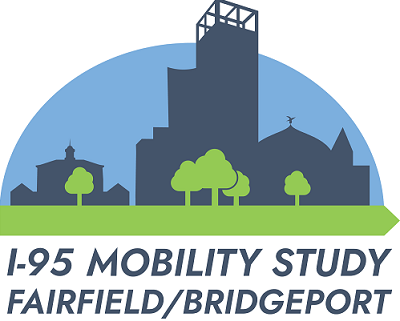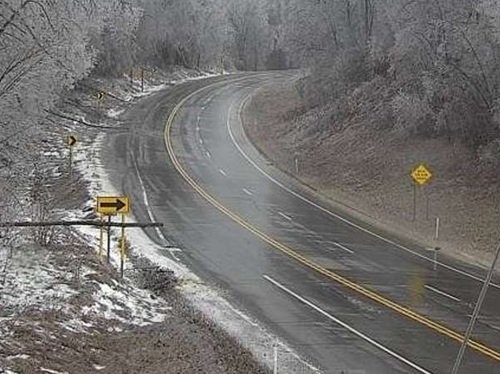The Indiana Department of Transportation recently hosted an event celebrating the early completion of the Interstate 69 corridor connecting Evansville to Indianapolis.
[Above photo by Indiana DOT]
The “Construction on the Finish Line” project – the final segment of the I-69 corridor – began in 2019 in Martinsville, the agency noted.
Over the last five years, the $2 billion project has upgraded more than 26 miles of State Road 37 to interstate standards, constructed 10 new interchanges and built more than 35 lane-miles of local access roads through Morgan, Johnson and Marion Counties.
This particular part of the I-69 “Finish Line” project is the sixth and final section of the I-69 connection between Evansville and Indianapolis, beginning in Martinsville and ending at I-465. With the opening of the interchange, I-69 runs continuously from the Canadian border at Port Huron, MI to Evansville, IN.
[Editor’s note: As an aside, an Indiana DOT traffic-count camera not only recently captured live footage of a tornado setting down near I-265 but also survived being struck by the that very same twister as well.]
“This historic milestone, completed three years ahead of schedule, is the culmination of decades-long conversations, planning efforts and progress,” said Governor Eric Holcomb (R) in a statement.
“The opening of the I-69 Finish Line corridor completes not only a direct connection between Evansville and Indianapolis but also to and through Kentucky and Michigan [and] all the way ultimately to our important Canadian and Mexican supply chain trade markets,” he added.
The agency noted that the new interchange at I-69 and I-465 consists of two flyover ramps just west of the existing SR 37/Harding Street interchange. South of I-465, the newly constructed I-69 diverts from the current path of SR 37 north of Edgewood Ave. From the interchange, I-69 will run concurrently with I-465 to the I-69 interchange on the northeast side of Indianapolis.
Other state departments of transportation are either planning for or engaged in similar corridor improvement projects.

For example, the Connecticut Department of Transportation recently launched the Interstate 95 Fairfield/Bridgeport Mobility Study that aims to identify projects that improve safety, mobility, and operations along the I-95 corridor between Bridgeport and Fairfield.
That stretch of highway “is one of the most heavily traveled roadways in the state, carrying approximately 130,000 vehicles per day,” David Mancini, project manager for the agency, in a statement.
“The outcomes of the planning and environmental linkages study will streamline CTDOT’s project development and environmental review of resulting transportation improvement projects, accelerating project delivery and minimizing overall costs,” he added.
This CTDOT study will also follow the Planning and Environment Linkages or PEL process developed by the Federal Highway Administration; a collaborative and integrated approach to transportation planning that considers environmental, community, and economic goals early in the planning and design process for such infrastructure projects.
[Editor’s note: In the video below, the Colorado Department of Transportation explains why guardrail maintained plays a critical safety role for vehicular traffic traveling along such roadway corridors.]
Meanwhile, in June, the Florida Department of Transportation announced that a series of Interstate 4 projects that comprise the Moving Florida Forward Infrastructure Initiative – locally referred to as the “Moving I-4 Forward Program” – will begin earlier than originally scheduled; meaning traffic congestion relief along that corridor should occur by the end of 2025 rather than at the end of planned program completion in 2030.
“It is great news that we has been able to further accelerate this segment of I-4’s congestion relief. Drivers do not want to sit in traffic, they want to be at home with their families – part of the solution in delivering a better quality of life for our residents and visitors,” said Florida DOT Secretary Jared Perdue in a statement at the time.
He explained that by building auxiliary lanes and advancing construction of two roadway projects at ChampionsGate and World Drive, the agency will expedite the completion of core projects along the I-4 corridor.
[Editor’s note: The South Carolina Department of Transportation is engaged in a similar effort with its ongoing Interstate 26 widening project in Calhoun and Lexington Counties.]
That plan will facilitate less disruptive traffic shifts during all the combined construction work in the region and ensure projects can be constructed independently and faster − breaking away from traditional and sequential construction scheduling, Perdue noted.
“Florida DOT is laser-focused on getting the job done and ensuring our roads keep pace with Florida’s growth as people continue to move here to enjoy Florida’s freedom and our strong economy,” he said.
 States
States
Podcast: Flashing LED Lights Can Boost Roadway Safety
December 5, 2025 States
States

